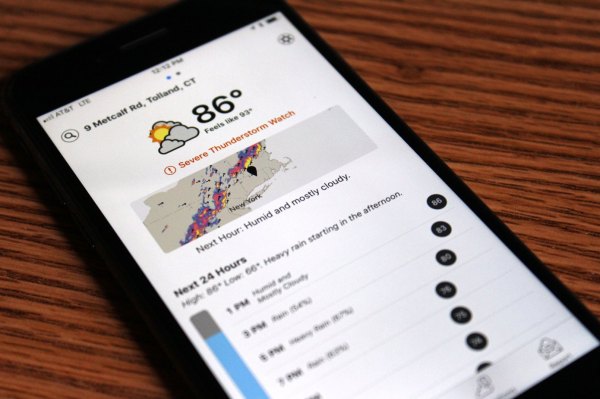Bad news for Dark Sky users: The popular weather app Apple acquired in March 2020 now has an official shutdown date. According to a notification appearing on the app’s home screen, Dark Sky will no longer be available as of January 1, 2023, as its forecasting technology has now been integrated with Apple’s own Weather application.
The news is not surprising, though it is disappointing.
Following the acquisition, Apple promptly wound down the Android and Wear OS versions of Dark Sky and said it would no longer accept signups for Dark Sky’s API, which had allowed third-party app developers to access the company’s database of weather forecasts and historical weather data. It later pushed back the API service’s closure until the end of 2022, and said the iOS app would shut down around the same time.
The writing was on the wall. After all, Dark Sky’s app had not been the key focus for Apple’s deal — it was the forecasting technology and the weather service itself.
Apple saw the potential in turning Dark Sky’s API into its own revenue-generating business. Previously, that API had offered 1,000 API calls for free, then charged $0.0001 for each subsequent call. At Apple’s WWDC 2022, alongside the launch of a default weather app for iPad, Apple announced it would transition the API’s paying customers to its new weather service, WeatherKit, where it would provide up to 500,000 API calls per month as part of its Apple Developer Program membership during the beta period and beyond.
It will then go on to charge businesses for additional data at the following rates:
- 1 million calls/month: US$49.99
- 2 million calls/month: US$99.99
- 5 million calls/month: US$249.99
- 10 million calls/month: US$499.99
- 20 million calls/month: US$999.99
As of yesterday’s iOS 16 launch, Apple also officially launched its WeatherKit subscriptions, noting developers could now access this weather data in apps built for iOS 16, iPadOS 16, macOS 13, tvOS 16 and watchOS 9 with a platform-specific Swift API and for other platforms with a REST API. Developers can upgrade for more calls or downgrade at any time via the Account tab in the Apple Developer app, the company noted.
Given this service is now live and integrated with Apple’s Weather app, it’s understandable that Apple will close Dark Sky’s iOS app. But the interesting thing here is that even though the Dark Sky app is directly pointing users to the Apple Weather app as part of its notification to existing users, Apple doesn’t necessarily have to convince those users to make the switch in order to benefit.
Because Apple bought Dark Sky’s backend weather data service, it will now have the chance to generate revenue whenever users turn to another third-party weather app that’s tapping into WeatherKit. For now, it’s unclear how many former Dark Sky API customers will make that transition, however, as the WeatherKit service has just gone live.
It is a shame to see Dark Sky’s consumer-facing product go, however. The well-designed app has been a longtime favorite for many, thanks to its easy-to-read user interface with tappable buttons for quickly swapping between forecasts for the day’s temperatures, precipitation probability, humidity, UV Index, and more, as well as its radar maps and customizable notifications. According to data from mobile intelligence firm Sensor Tower, the iOS app has seen nearly 2 million downloads to date
Thankfully, there’s still an ecosystem of third-party weather apps available that bring a little more visual flair to forecasts, if Apple’s own weather app doesn’t inspire. Among our favorites: CARROT Weather, (Not Boring) Weather, MyRadar and Clime (if you’re willing to subscribe).
